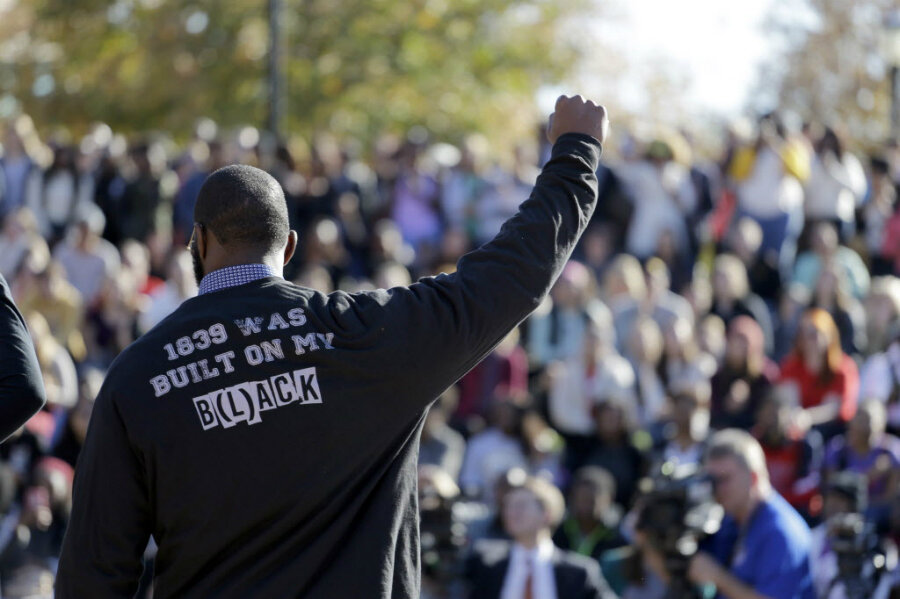Missouri: Can hiring more black professors shift institutional racism?
Loading...
This fall, students at the University of Missouri (Mizzou) have protested the treatment of African American students and faculty, part of an ugly chain of racist encounters on campuses and across the United States.
After a muted university response, student activism grew, including a hunger strike, a threat from 32 members of the university's football team to boycott future games, and an organization called Concerned Student 1950, referring to the first year black students were admitted to Mizzou.
Faculty members soon joined. As the protests gained steam, the school’s president and chancellor resigned.
"This is just a beginning in dismantling a system of oppression in higher education," said Marshall Allen, a member of the group.
On Oct. 20, Concerned Students 1950 had released a list of demands, including compulsory programs on racial awareness and inclusion for students and staff, more mental health professionals of color, and increasing the number of African American faculty and staff to 10 percent by the 2017-2018 school year.
As FiveThirtyEight's Anna Maria Barry-Jester detailed:
Just 3.2 percent of Mizzou’s tenured and tenure-track faculty are black, compared with 5.2 percent nationally.... The highest representation of blacks was among the service and maintenance staff, at 25.6 percent.... Getting black representation up to 10 percent would require hiring 414 new people, based on the 2013 numbers, or replacing about 370 current staff and faculty.
Concerned Student 1950 argues that the faculty should reflect the school’s student populace. Total student enrollment for African Americans was 7 percent in 2014, according to university data.
Only five universities nationwide have more than five percent black faculty, according to an analysis of federal data by The Associated Press.
The University of Mississippi has the largest percentage of African American faculty, with 6.29 percent. It also has the highest percentage of black students: 15.26 percent. The University of North Carolina at Chapel Hill, the University of Alabama, the University of Georgia, and the University of South Carolina at Columbia are the only other schools with more than 1 in 20 African American faculty members.
Adding more than 400 black professors to the Mizzou faculty is logistically unlikely, and more importantly, may not be enough to uproot the kind of systemic racism embedded in American society or the university culture.
A Stanford University study released in May examined implicit biases in education by looking at how teachers discipline students. It found that teachers tend to inflict more severe punishments on black students than white students, and children of color are more often viewed as "troublemakers."
Jason Okonofua said he undertook the project because little empirical research had examined the role of race in discipline.
"There was just a lot of speculation about it," said Mr. Okonofua, "that either teachers are racist and biased against students, or that black and Latino students just behave badly and that that’s why we see the disparities."
Okonofua said strongly held beliefs create unconscious bias against groups, leading to what he called the “escalation effect,” where people take small or isolated incidents as evidence of sweeping patterns that reinforce long-held stereotypes, and therefore respond disproportionately.
To offset the effect, Okonofua recommends "policy interventions, along with psychological and sociological interventions."
Hiring more black faculty would benefit students on multiple levels, argues Deidree Golbourne, an African-American studies major at the University of Buffalo.
"Studies show that students normally do better if they're taught by people that can relate to them, not only economically or socially, but racially," she told the Chronicle of Higher Education, "because naturally we face similar struggles."
Diverse classrooms are often more open and innovative, said Kenneth Monteiro, president of the American Association of Blacks in Higher Education and dean of the College of Ethnic Studies at San Francisco State University, in an interview with the Chronicle.
"Basically, it's both ethically right and practically more productive and creative," he said.







